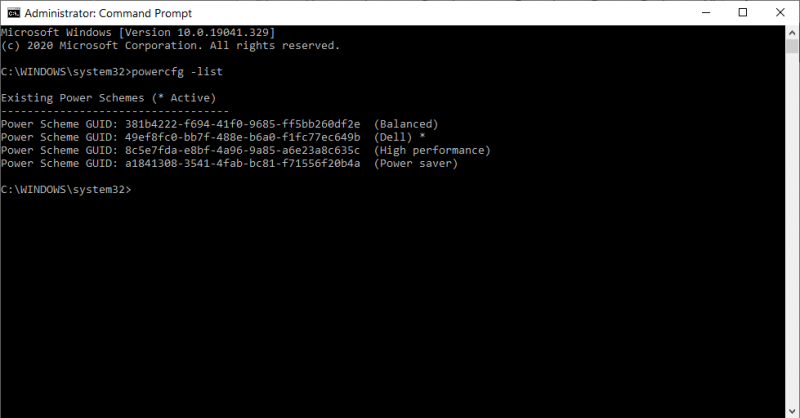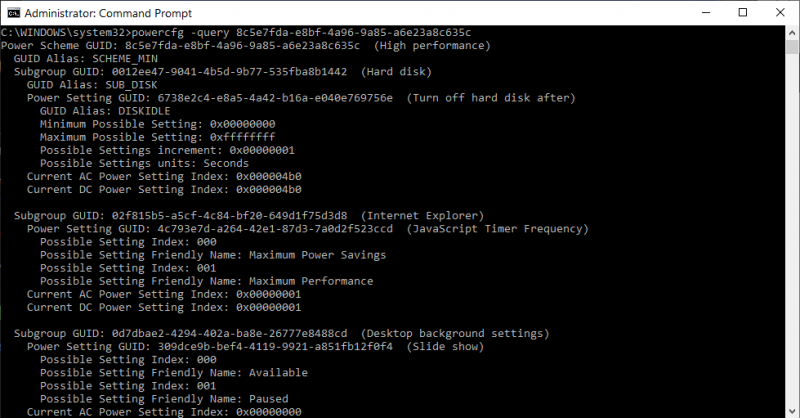As you may know, your computer can run under a variety of different power schemes. A power scheme is a collection of hardware and system settings that manage how your computer uses power. They are typically used the most with laptops, where it's more crucial to trade off between performance and battery preservation. Even a desktop machine can use them, though. There are three schemes that come with Windows by default. They are Balanced, High Performance, and Power Saver, and you can create others if none of these suits you.
There is a command utility in Windows called Powercfg, which provides a great deal of control over your power schemes. (You can use the GUI for much of this functionality, too, but a lot of people prefer using the command line.) Powercfg takes numerous switches to tell it what you want to do regarding your power schemes. To see all of the switches available to Powercfg, invoke it with the "-HELP" (or "-?") switch.
For this tip we want to display the contents of the specified power scheme. First, we'll get a list of the available power schemes: (See Figure 1.)

Figure 1. Powercfg -list.
Now let's say we want to find out more details about the High Performance scheme. For this we'll use the "-QUERY" (or "-Q") switch and specify that scheme's GUID. Be aware that this produces a great deal of output—more than would be appropriate to list in this tip. So, I'm going to only list the first screenful of resulting lines: (See Figure 2.)

Figure 2. Powercfg -query (partial listing).
Note the GUID that I specified on the first line is the same GUID as was listed in the previous figure for the High Performance scheme. What all this data means is well beyond the scope of this tip.
The "-QUERY" switch does take an optional second GUID for a subgroup. Now that we have some subgroups shown in the above figure, we can limit our view to just one subgroup of the High Performance scheme by specifying the second GUID after the first: (See Figure 3.)

Figure 3. Powercfg -query showing a subgroup.
![]()
![]()
![]() This tip (13474) applies to Windows 7, 8, and 10.
This tip (13474) applies to Windows 7, 8, and 10.
Do you have multiple monitors (or a projector) hooked up to your system? Here's how to utilize that second display device ...
Discover MoreWindows 10 provides multiple ways to format a USB drive. Discover how to use Disk Manager to easily format a USB drive.
Discover MoreDisk fragmentation is one of those things which, if severe, can adversely affect your system's performance. This tip ...
Discover MoreThere are currently no comments for this tip. (Be the first to leave your comment—just use the simple form above!)
Copyright © 2026 Sharon Parq Associates, Inc.
Comments